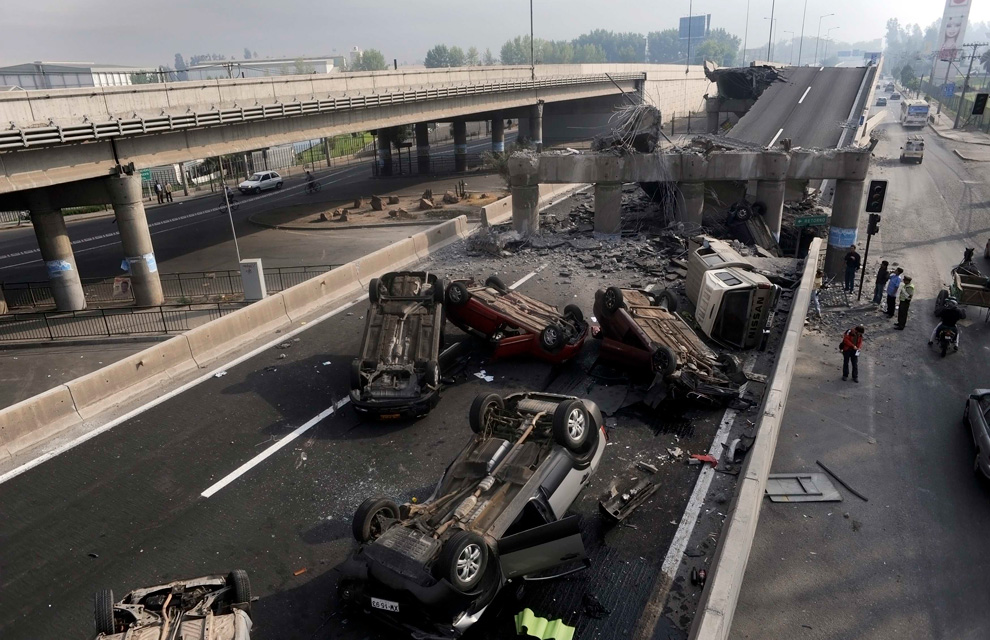A 7.5-magnitude earthquake jolted our region on Monday, killing over 200 people. And as rescuers pick their way through rugged terrain and pockets of insurgency in the search for survivors, we look at some the facts that will remind you how little we really know about this deadly natural phenomenon:
1. The largest earthquake ever recorded was a magnitude 9.5 in Chile on May 22, 1960. It lasted approximately 10 minutes.
When the earthquake occurred, seismographs recorded seismic waves that traveled around the world. These seismic waves shook the entire earth for many days.
2. Southwestern California is moving northwest along the San Andreas Fault as the two sides of the fault slip past one another.
Essentially, San Francisco is moving toward Los Angeles at the rate of about 2 inches per year the same pace as the growth of your fingernails.
In 15 million years, the two cities could meet. In 85 million years, Los Angeles could be next to Alaska. Snow in Los Angeles? Right. This north-south movement also means that California wont fall into the sea a commonly-held belief in the state.
3. There are ice quakes in Antarctica that occur within the ice rather than the land below.
A recent study revealed that the continents ice snapped and popped because of a major earthquake in Maule, Chile, halfway around the world.
Quakes on one side of Earth can shake the other side. Seismologists studying the massive 2004 earthquake that triggered tsunamis throughout the Indian Ocean found that the quake had weakened at least a portion of Californias famed San Andreas Fault.
However, it was the first evidence that distant earthquakes can trigger ice quakes in Antarctica. Listen to Antarcticas Icequakes
4. There are about 500,000 earthquakes a year around the world, as detected by sensitive instruments. About 100,000 of those can be felt, and 100 or so cause damage each year.
Each year, the southern California area alone experiences about 10,000 earthquakes, most of them not felt by people. The 1906 San Francisco earthquake ruined almost 500 blocks of the city.
5. In 1556, an earthquake in the Shansi province of China killed some 830,000 people.
It is still the deadliest earthquake ever to have been recorded.
6. Approximately 80% of all earthquakes take place in the Pacific Ring of Fire the most geologically active region of Earth.
It circles the Pacific Ocean, touching the coasts North and South America, Japan, China and Russia. Its where the majority of Earths major quakes occur as major plate boundaries collide.
7. According to some scientists, the Earth has been more seismologically active in the past 15 years or so.
Relative to the 20-year period from the mid-1970s to the mid-1990s, the Earth has been more active over the past 15 or so years, says Stephen S Gao, a geophysicist at Missouri University of Science & Technology.
Not all seismologists agree with this theory.
8. March is not earthquake month despite what some may claim or believe.
Some massive earthquakes have occurred in the month of March, such as the 1957 and 1964 Alaska earthquakes the latter being a 9.2-magnitude event which killed 125 people and caused $311 million in property damages.
However, the next three biggest US earthquakes occurred in February, November, and December.
A devastating earthquake in Chile in 2010 struck on February 27. And the huge 9.3 temblor that spawned the devastating Indian Ocean tsunami in 2004 occurred on December 26. Interestingly, the last major earthquake in Pakistan before yesterdays also took place in the month of October.
On October 8, 2005, a magnitude 7.6 earthquake shook Kashmir along with sections of Pakistan, India and Afghanistan. More than 80,000 people perished as a result of the quake, while an estimated 4 million others left homeless.
9. The sun and moon cause tremors.
While it was previously known that the sun and moon create tides in the planets crust, minor versions of ocean tides, researchers now say the tug of the sun and moon on the San Andreas Fault stimulates tremors deep underground.
10. A city in Chile moved 10 feet in the massive 8.8 magnitude earthquake February 27, 2010.
The rip in Earths crust shifted the city of Concepción that much to the west. The quake is also thought to have changed the planets rotation slightly and shortened Earths day.

Cars lie overturned after the highway they were travelling on was destroyed in an earthquake in Santiago, Chile February 27, 2010. PHOTO: REUTERS
11. Earths bulge was trimmed a little by the undersea earthquake in the Indian Ocean which triggered a series of devastating tsunamis on December 26, 2004.
The tsunamis struck the coasts of most landmasses bordering the Indian Ocean, bringing 100-foot waves and killing over 225,000 people in 11 countries.
Earths midsection bulges in relation to the measurement from pole-to-pole, and the catastrophic land displacement caused a small reduction in the bulge, making the planet more round.

Seawater splashes in the air as the first tsunami waves hit Ao Nang, Krabi Province, Thailand, on December 26, 2004. PHOTO: David Rydevik
12. Alaska is the most earthquake-prone state and one of the most seismically active regions in the world.
The region experiences magnitude 7.0 earthquakes almost every year and a magnitude 8.0 or greater earthquake approximately once every 14 years.
Follow this link to join our WhatsApp group: Join Now
Be Part of Quality Journalism |
Quality journalism takes a lot of time, money and hard work to produce and despite all the hardships we still do it. Our reporters and editors are working overtime in Kashmir and beyond to cover what you care about, break big stories, and expose injustices that can change lives. Today more people are reading Kashmir Observer than ever, but only a handful are paying while advertising revenues are falling fast. |
| ACT NOW |
| MONTHLY | Rs 100 | |
| YEARLY | Rs 1000 | |
| LIFETIME | Rs 10000 | |











